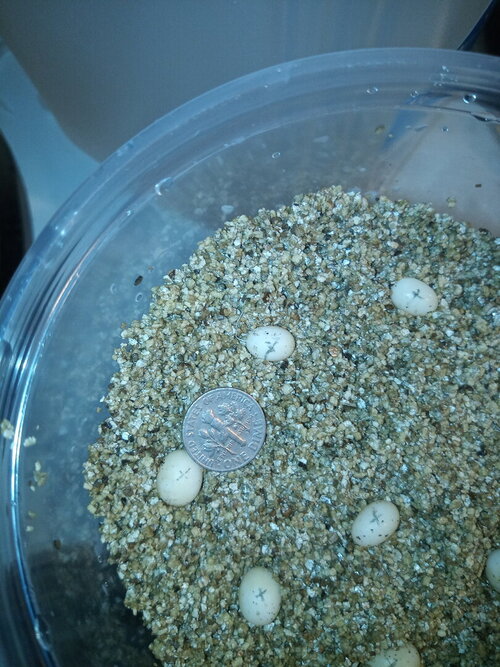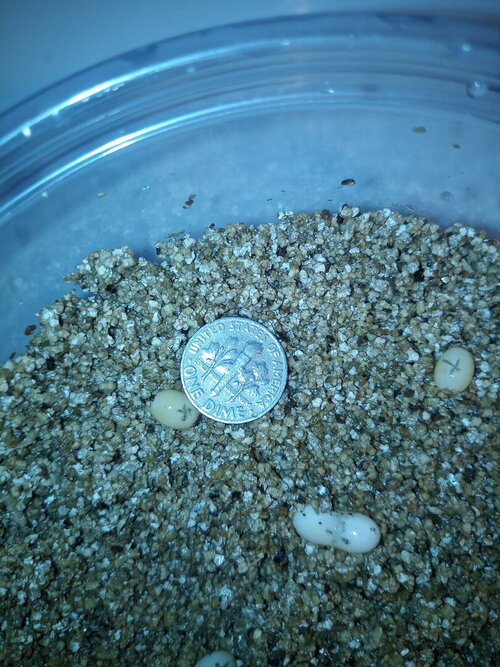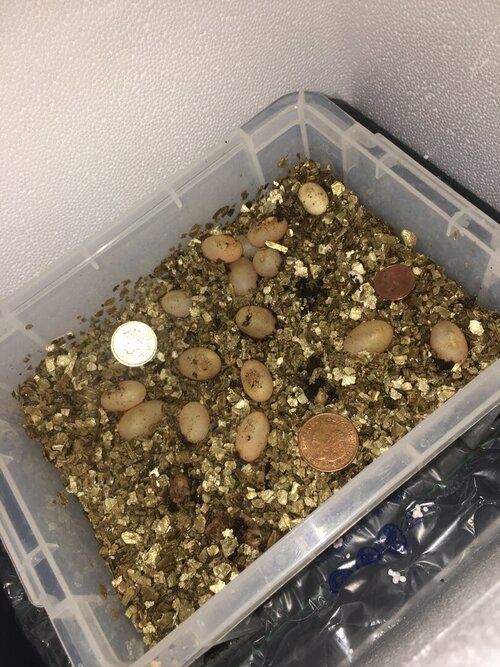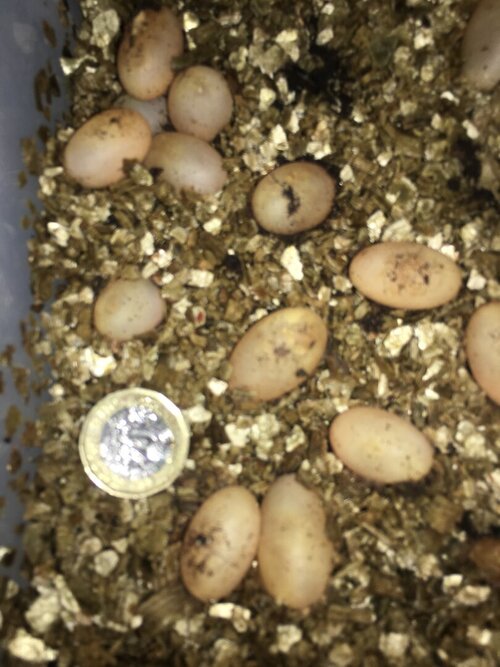TayloredExotics
Established Member
Just wanted to post an example of the size difference between fertile (1st pic) and infertile (2nd pic) eggs. This is the first fertile clutch produced from my female (who will be 3 years in August), which I believe is why there was such a high proportion of infertile eggs. She was mated 31 May, began digging 28 June, and laid 01 July.
Also, one 'double' egg (2nd pic); note this would usually be an indicator that the female may be egg bound and having trouble passing remaining eggs. Normally it would be cause for an immediate vet visit and x-rays; however, it has only been a month since she mated, and she is currently active and eating like normal, so it was most likely a fluke.
Also, one 'double' egg (2nd pic); note this would usually be an indicator that the female may be egg bound and having trouble passing remaining eggs. Normally it would be cause for an immediate vet visit and x-rays; however, it has only been a month since she mated, and she is currently active and eating like normal, so it was most likely a fluke.





